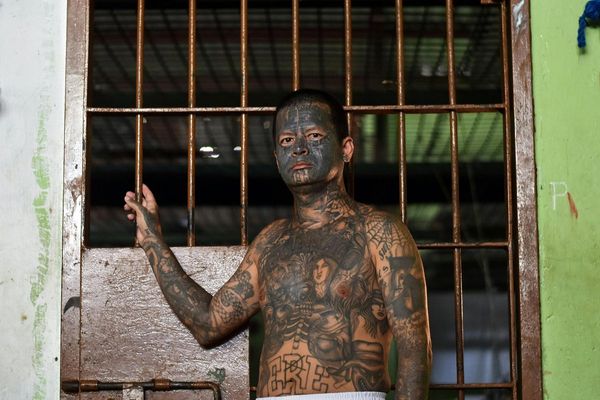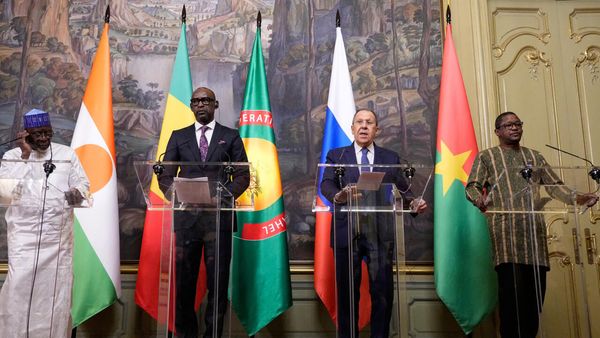Three Russian scientists who have worked on hypersonic missile technology face "very serious accusations" of state treason, the Kremlin says.
Colleagues of Anatoly Maslov, Alexander Shiplyuk and Valery Zvegintsev this week published an open letter in their defence, warning that the prosecutions threaten to damage Russian science.
The three men were all leading academics at the Khristianovich Institute of Theoretical and Applied Mechanics (ITAM) in Novosibirsk, the largest city in Siberia. Here's what we know about them.
ANATOLY MASLOV
Maslov, 76, is a physicist, chief researcher at ITAM and professor at two Novosibirsk universities. His research lies in the field of viscous gas dynamics, or the study of how gases move around physical objects – like missiles and jets - during transonic and supersonic flights.
Maslov regularly attended conferences abroad and published in leading journals. He collaborated with Shiplyuk and Zvegintsev on at least one occasion, co-authoring a book chapter entitled "Hypersonic Short-Duration facilities for Aerodynamic Research at ITAM, Russia", published in 2016.
Maslov was detained early in the morning of June 28 last year in Novosibirsk, according to an interview that his sons Nikolai and Alexei gave to local media. He declined to tell them anything about the possible reasons for his arrest, and they learned from his lawyer that he was being charged with state treason. Parliament voted last month to increase the penalty for treason to life imprisonment, up from 20 years.
Kommersant newspaper reported that Maslov was accused of divulging state secrets related to hypersonics, but provided no further details. It said that soon after his arrest, authorities flew him to Moscow and put him in pre-trial detention in Lefortovo prison, a former KGB interrogation site where Wall Street Journal reporter Evan Gershkovich is also being held.
Maslov will be tried by the St. Petersburg City Court in a "top secret" case that was registered on May 12, according to the court’s press office. Treason cases are held behind closed doors in Russia.
Maslov had an international reputation and "received many offers of permanent work from foreign organizations, some very tempting, but he always refused," his son Nikolai said. "He only thought about the Institute and those people who believe in it and hope for it. He could not leave them and his country."
Maslov has received numerous awards for his work on aviation and turbulence studies and is a member of the international committee of the American Institute of Aeronautics and Astronautics, headquartered in Fairfax County, Virginia.
ALEXANDER SHIPLYUK
Shiplyuk, 57, is a well-regarded physicist studying high-speed air and gas dynamics, according to a biography on ITAM’s website. Born in Siberia, he studied in the aircraft engineering department at Novosibirsk State Technical University. He joined ITAM in 1990 as an intern researcher, moving up through the ranks until he was elected the institute’s director in 2015.
Shiplyuk was considered an expert in his field, particularly in the area of experimental aero-thermodynamics of hypersonic aircraft. The recipient of several awards in aerodynamics, he headed a lab focused on "hypersonic technologies", according to the website.
Stuart Laurence, a professor of aerospace engineering at the University of Maryland, told Reuters he met Shiplyuk on two occasions, including at a conference in Tours, France in 2012 where the Russian scientist presented a paper with Maslov.
"I was shocked and horrified to see him arrested," said Laurence, who last emailed with Shiplyuk in January 2021. "He was very well respected in his field."
Laurence said he was "pretty sure" Shiplyuk would have been handling state secrets at ITAM. "Given the climate that we’re in, hypersonics are a considered a key technology by many countries. There was a lot of impetus to work on more restricted research directly applicable to weapons," Laurence said.
Shiplyuk published in foreign journals, including co-editing a book with an ITAM colleague published by the American Institute of Physics, Inc., a nonprofit headquartered in Maryland. But Laurence said Shiplyuk had not been publishing much recently due to difficulties Russian scientists face in travelling to western countries.
Shiplyuk was arrested in August in Novosibirsk, his colleague Vasily Fomin told the TASS news agency. TASS said he too was then transferred to pre-trial detention in Moscow's Lefortovo prison.
VALERY ZVEGINTSEV
Zvegintsev, a chief researcher at ITAM, was detained most recently, on April 7, according to a source cited by local media. News of his arrest was not known until the scientists’ colleagues published their open letter on May 15.
From 1995 to 2000 Zvegintsev headed a research group at ITAM called NIS-21 studying combustion in gas flows. In 2001 he founded a lab at ITAM focused on high-speed air and gas dynamics, according to the institute's website. Five years later, Shiplyuk became head of the lab.
Like his colleagues, Zvegintsev travelled abroad to conferences and published in international peer-reviewed journals, like "Energies" and the "International Journal of Hydrogen Energy".
TASS, citing a source, reported that Zvegintsev’s arrest was linked to an article he wrote on gas dynamics that was published in an Iranian journal. The source said the article passed two reviews for possible state secrets prior to publication.
Zvegintsev is currently under house arrest, TASS said.
(Editing by Mark Trevelyan and Andrew Heavens)







